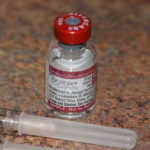There is sure to be much discussion to a provision in the U.S. Senate’s version of Health Care Reform which would impose a tax (penalty) on elective cosmetic procedures. With a tax rate of 5%, the measure presumably will raise close to $6 billion of the projected $850 billion price tag of the healthcare bill. (everyone knows that this projected cost is fancifully low)

As one would expect, all sides of the cosmetic surgery industry from physicians to patients are voicing opposition. Their argument is that such a tax unfairly targets the middle class and working women in particular. Statistics from the American Society of Plastic Surgeons (ASPS) show that only a minority of people who undergo any form of cosmetic surgery has a household income greater than $90,000 per year and the vast majority (greater than 80%) are women between the working ages of 18 to 65. Clearly this is not a tax on the wealthy and is a discriminatory tax that falls largely on women.
While the idea that it is a tax on the wealthy is fallacious, it is a tax on the healthy. Contrary to what many would guess, the vast majority of cosmetic procedures are done are health conscious individuals. Most are already reasonable fit and are appearance focused. Obese, smokers, and other ‘unhealthy’ patients make up just a fraction of whom ever undergo cosmetic procedures or surgery. This proposed discriminatory tax is targeting those who do take care of themselves to help some who have made poor health choices along the way. It would make more sense to tax unhealthy food items, for example, that have incredibly high fat content…and it would bring a hundred fold increase in revenue to support health are reform.
This tax idea is not new as one currently exists in the New Jersey. Using a tax rate of 6% since 2004, tax revenues have fallen far short of projections. Other states such as New York, Illinois, Texas, Washington, Arkansas, and Tennessee have had similar legislation proposed or introduced but none has passed to date.
This type of tax bill is also troubling because it treds on choppy waters that health insurance companies have trouble deciphering. What is the official or tax definition of a cosmetic procedure? IRS rules for tax deductions state that any procedure necessary to treat a deformity arising from, or directly related to, a congenital abnormality, a personal injury resulting from an accident or trauma, or disfiguring disease is a medical procedure. Anything else is a cosmetic procedure. Some delineations are quite clear Botox for wrinkles or migraines for example. But what about a tummy tuck to treat the effects of pregnancy. Are the effects of childbirth on a woman’s stomach a cosmetic or reconstructive procedure?
Supporters of this tax proposal state that this is no different than taxes on luxury goods and services. These are not viewed as medical procedures even though they should and are generally performed by licensed physicians.
With some many differences between the House and Senate Health Reform bills, it is difficult to say what will eventually shake out. But this hidden tax will largely penalize health conscious women. Â is a troubling signal of how far reaching your legislators will go to get more of your hard earned money. And once again the beneficiaries of your ‘generosity’ will likely be those that have sacrificed less.
Dr. Barry Eppley
Indianapolis, Indiana


